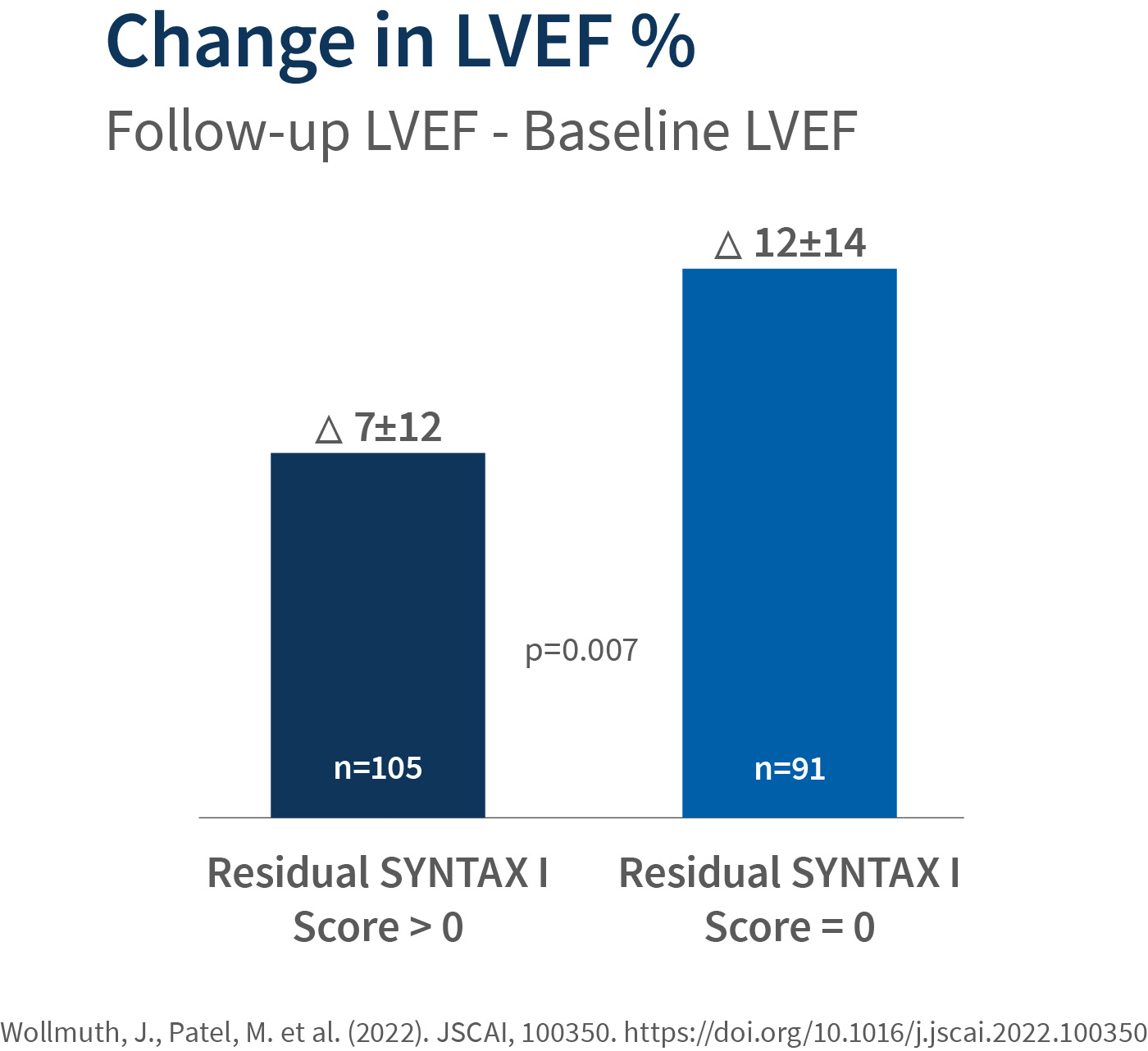
EF Improvement Following Contemporary High-Risk PCI
RESTORE EF was designed to validate contemporary best practices in high-risk PCI, including complete revascularization in a single setting, use of atherectomy and large-bore access techniques.


Near Normal EF Patients Improved Heart Failure and Anginal Symptoms
Patients with near normal EF (>45%) experienced an 82% relative reduction in NYHA Class III and IV symptoms and a 97% relative reduction in CCS angina Class III and IV symptoms. High-risk PCI patients without depressed EF are likely to have more complex PCI and a high prevalence of comorbidities, according to data supporting the FDA's expanded indication for Impella use in high-risk PCI patients with or without depressed ejection fraction.1
Ejection Fraction Improvement with Complete Revascularization
Mitul Patel, MD, reviews the findings of the RESTORE EF study and a successful case of improved ejection fraction with complete revascularization.
Complete Revascularization is Associated with Greater Improvement in LVEF at 90-Day Follow-Up
Contemporary Practices for Impella®-Supported Complete Revascularization
Jason Wollmuth, MD, FACC, reviews the first case he enrolled in the RESTORE EF study, which highlights best practices and contemporary techniques to improve symptoms as well as ejection fraction in these complex patients.
LVEF, Heart Failure Symptom and Anginal Symptom Improvements Demonstrated in Impella-Supported High-Risk PCI Patients
Case Study Epitomizing Results from RESTORE EF
Aditya Bharadwaj, MD, an investigator for the RESTORE EF study, presents a case study epitomizing the results from the trial.


LVEF at 90 Days
RESTORE EF is a prospective multicenter study that assessed 90-day LVEF improvement as the primary endpoint and changes in NYHA HF and CCS angina symptom classification as the secondary endpoint. It found significant LVEF improvement at 90 days and significant reduction in NYHA HF and CCS angina Class III/IV symptoms.
More Pronounced EF Improvement in Severe and Moderately Depressed EF Patients
- 51%
of the patients in RESTORE EF had near-normal ejection fraction or moderately depressed EF1
- 49%
of patients had severely depressed EF1
The EF improvement benefit was more pronounced in patients with severe and moderately depressed EF.
RESTORE EF & PROTECT III demonstrate the continuous safety improvement in patients treated with Impella heart pumps resulting in low major bleeding rates in non-emergent HRPCI patients
Continuous Safety Improvement Over Time in High-Risk PCI Patients Treated with Impella Heart Pumps
The safety improvement in non-emergent HRPCI is not isolated to the more experienced operators. Analysis of the National Inpatient Sample published in 2020 showed that the safety and efficacy of high-risk PCI supported by Impella heart pumps translated broadly across the entire country.
RESTORE EF Investigators Implemented Numerous Best Practices in the Areas of:
RESTORE EF demonstrates that contemporary best practices in high-risk PCI, including more complete revascularization with hemodynamic support from Impella, are associated with significant improvements in LVEF, heart failure symptoms, and angina symptoms at 90-day follow-up in patients with and without depressed ejection fraction.
References
- Wollmuth, J., Patel, M. et al. (2022). JSCAI, 100350. https://doi.org/10.1016/j.jscai.2022.100350
NPS-2993



